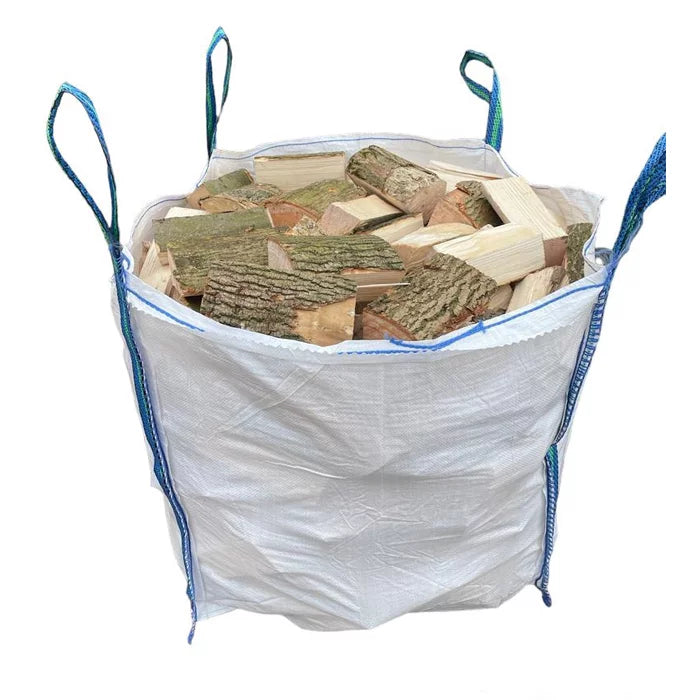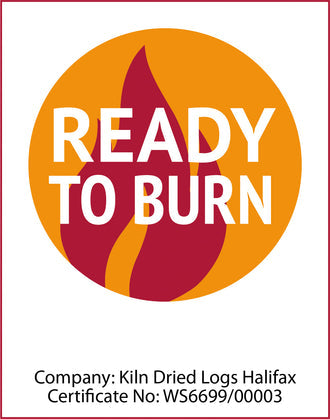When it comes to creating authentic wood-fired pizza, choosing the best wood for pizza oven cooking makes all the difference between mediocre results and restaurant-quality pies. The type of wood you select directly impacts flavor, heat output, burn characteristics, and overall cooking performance. Understanding wood selection principles will transform your pizza-making experience and help you achieve consistently excellent results every time you fire up your oven.
Understanding Wood Types for Pizza Ovens
Wood selection for pizza ovens requires understanding the fundamental differences between hardwoods and softwoods, each offering distinct characteristics that affect your cooking experience. Hardwoods like oak, ash, beech, and birch provide dense, long-burning fuel that generates intense, sustained heat perfect for pizza cooking. These woods typically burn cleaner, produce less smoke once established, and maintain consistent temperatures for extended periods.
Softwoods including pine, spruce, and fir burn faster and hotter initially but don't maintain heat as effectively as hardwoods. While some pizza makers use softwoods for initial heating, they're generally less suitable for sustained cooking sessions. The key lies in understanding how different wood species behave under high-heat conditions and selecting varieties that complement your specific cooking style and oven design.
Moisture content plays a crucial role in wood performance, with properly kiln-dried wood containing less than 20% moisture providing optimal results. High-moisture wood creates excessive smoke, reduces heat output, and makes temperature control difficult. Quality suppliers ensure their wood undergoes proper seasoning or kiln-drying processes to achieve ideal moisture levels for pizza oven use.
Premium Hardwood Options for Pizza Ovens
Oak stands as the gold standard for pizza oven fuel, offering exceptional heat output, long burn times, and neutral flavor characteristics that won't overpower your pizza. Oak's dense structure provides steady, consistent heat that maintains the best temperature for wood fired pizza oven cooking, typically ranging from 800°F to 900°F for optimal results. The wood burns cleanly once established, producing minimal smoke and ash while delivering reliable performance session after session.
Ash wood delivers similar benefits to oak, burning hot and clean while providing excellent heat retention. Its straight grain structure makes it easy to split and stack, and it lights relatively quickly compared to other hardwoods. Ash produces a subtle, pleasant aroma that enhances rather than dominates pizza flavors, making it an excellent choice for both novice and experienced pizza makers.
Beech offers outstanding heat output and burns with minimal smoke production, making beech wood ideal for indoor pizza ovens or situations where smoke control is important. This hardwood provides consistent, controllable heat that responds well to airflow adjustments, allowing precise temperature management throughout cooking sessions. Beech's clean-burning characteristics make it particularly suitable for delicate pizza styles where subtle flavors are paramount.
Birch wood burns hot and fast, making it excellent for quick heating and temperature boosts during cooking sessions. While it doesn't provide the extended burn times of oak or ash, birch excels at rapidly bringing ovens to cooking temperature. Many pizza makers use birch in combination with longer-burning hardwoods to achieve optimal heating curves and maintain consistent temperatures.
Specialty Woods for Enhanced Flavor
Fruit woods like apple, cherry, and pear add distinctive aromatic qualities to pizza cooking while providing adequate heat output for most applications. Apple wood delivers a mild, sweet smoke that complements both savory and sweet pizza preparations. Cherry wood produces beautiful color enhancement and subtle fruity notes that work particularly well with meat-topped pizzas.
Nut woods including hickory and walnut provide intense, robust flavors that suit specific pizza styles but require careful use to avoid overwhelming delicate ingredients. Hickory delivers bold, bacon-like smoke flavors that enhance meat lovers' pizzas but may overpower vegetable-based preparations. These specialty woods work best when used sparingly or blended with neutral hardwoods.
Mediterranean woods such as olive and grapevine offer authentic flavors reminiscent of traditional Italian pizza ovens. Olive wood burns extremely hot and clean while imparting subtle fruity notes that enhance Mediterranean-style pizzas. Grapevine prunings provide unique wine-like aromatics but burn quickly and work best as flavor-enhancing additions rather than primary fuel sources.
Softwood Considerations and Applications
While hardwoods dominate pizza oven fuel selection, certain softwoods serve specific purposes in wood-fired cooking. Larch and spruce, when properly dried, can provide quick ignition and rapid heating for oven startup. These woods burn hot and fast, making them useful for bringing ovens to temperature quickly before transitioning to hardwood fuel.
Pine and fir work adequately for oven heating but require careful management due to their resinous nature. These woods can produce excessive smoke if not properly seasoned and may impart unwanted flavors if used during active cooking. Most experienced pizza makers limit softwood use to initial heating phases, switching to hardwoods once cooking begins.
The key to successful softwood use lies in understanding their burning characteristics and using them strategically rather than as primary cooking fuel. Properly integrated softwoods can reduce overall fuel costs while providing adequate heating performance for specific applications.
Optimal Temperature Management
Achieving and maintaining the best temperature for wood fired pizza oven cooking requires understanding how different woods contribute to temperature control. Traditional Neapolitan pizzas cook best at 800°F to 900°F, requiring woods that burn hot and maintain consistent heat output. Dense hardwoods like oak and ash excel at maintaining these high temperatures for extended periods.
Temperature monitoring becomes crucial when using mixed wood types, as different species burn at varying rates and intensities. Professional pizza makers often use infrared thermometers to track both dome and floor temperatures, adjusting wood selection and placement to maintain optimal cooking conditions. The goal is achieving consistent heat distribution that cooks pizza bottoms and tops evenly.
Wood placement and feeding techniques significantly impact temperature control. Placing wood at the oven's back or sides allows flames to roll across the dome, creating even heat distribution. Regular feeding with small amounts of wood maintains steady temperatures better than adding large amounts sporadically. This approach prevents temperature spikes that can burn pizzas or create uneven cooking conditions.
Sourcing Best Wood for Pizza Oven
At Kiln Dried Logs Halifax, we understand that quality wood sourcing begins with finding suppliers who truly understand pizza oven requirements. As specialists in kiln-dried hardwoods, we guarantee moisture content below 20% across our entire range, ensuring consistent performance for every cooking session. Our mixed hardwood combinations are specifically designed for pizza oven use, combining different species like oak, ash, beech, birch, sycamore, and chestnut for optimal burning characteristics.
Through years of experience in the firewood industry, we've developed our kiln-drying process to use renewable biomass energy, creating environmentally friendly fuel that delivers maximum heat output and minimal smoke. Our extra-large bulk bags make handling and storage convenient, ensuring you always have a ready supply of high-quality wood fuel for your pizza oven adventures.
We also offer premium softwood options including larch and spruce for customers who prefer mixed fuel approaches. These carefully selected softwoods work excellently for quick heating phases, and when combined with our hardwood selections, provide complete flexibility for different cooking styles and temperature requirements.
Wood Preparation and Sizing
Proper wood preparation ensures efficient burning and easy handling during cooking sessions. Pizza oven wood should be split into pieces ranging from 2-4 inches in diameter for optimal burning characteristics. Smaller pieces ignite quickly and provide responsive heat control, while larger pieces offer sustained burning for longer cooking sessions.
Length considerations depend on your oven size, but most pizza ovens accommodate wood pieces 12-16 inches long. Consistent sizing makes stacking and feeding easier while ensuring predictable burning patterns. Avoid pieces that are too large for your oven door or too small to provide adequate burn time.
Bark removal isn't necessary for most hardwoods but can reduce ash production and improve burn quality. Some pizza makers prefer bark-free wood for cleaner burning, especially in indoor installations where smoke control is important. However, natural bark doesn't significantly impact cooking performance for most applications.
Common Wood Selection Mistakes
Using green or high-moisture wood represents the most common mistake in pizza oven fuel selection. Wet wood produces excessive smoke, reduces heat output, and makes temperature control nearly impossible. Always verify wood moisture content and choose properly seasoned or kiln-dried options for consistent results.
Mixing incompatible wood types can create unpredictable burning patterns and flavor conflicts. Avoid combining resinous softwoods with delicate hardwoods, as the strong pine or fir flavors can overpower subtle wood characteristics. Plan your wood combinations based on complementary burning patterns and flavor profiles.
Inadequate wood preparation including improper sizing or storage leads to inconsistent performance and frustrating cooking experiences. Take time to properly size, stack, and store your wood supply. This investment in preparation pays dividends in consistent cooking performance and reduced frustration during pizza-making sessions.
Professional Tips for Wood Selection Success
Experienced pizza makers often maintain multiple wood types for different cooking phases and styles. Keep fast-burning woods like birch for quick heating, steady-burning woods like oak for sustained cooking, and specialty woods like fruitwoods for flavor enhancement. This variety provides flexibility for different cooking situations and pizza styles.
Testing different wood combinations helps develop personal preferences and cooking styles. Start with proven combinations like oak and ash, then experiment with adding small amounts of specialty woods for flavor variation. Keep detailed notes about wood performance, temperature characteristics, and flavor impacts to refine your selection process.
Building relationships with quality wood suppliers ensures consistent access to premium materials. Many suppliers offer bulk pricing for regular customers and can provide guidance on wood selection for specific applications. Don't hesitate to ask suppliers about wood sources, processing methods, and storage recommendations.
Conclusion
The best wood for pizza oven cooking ultimately depends on your specific needs, oven type, and cooking style preferences. Hardwoods like oak, ash, and beech provide reliable performance for most applications, while specialty woods offer opportunities for flavor enhancement and creative cooking approaches. Focus on sourcing properly dried, appropriately sized wood from reputable suppliers, and experiment with different combinations to develop your signature pizza-making style. Remember that achieving the best temperature for wood fired pizza oven cooking requires not just proper wood selection but also understanding how different woods behave under high-heat conditions and developing techniques for consistent temperature management throughout your cooking sessions.



























